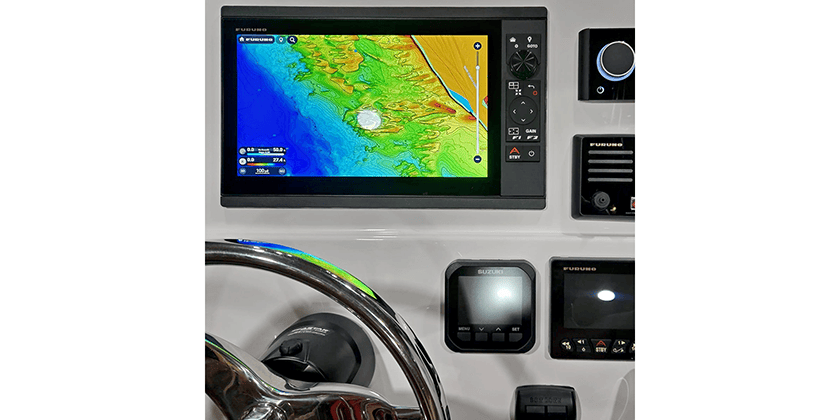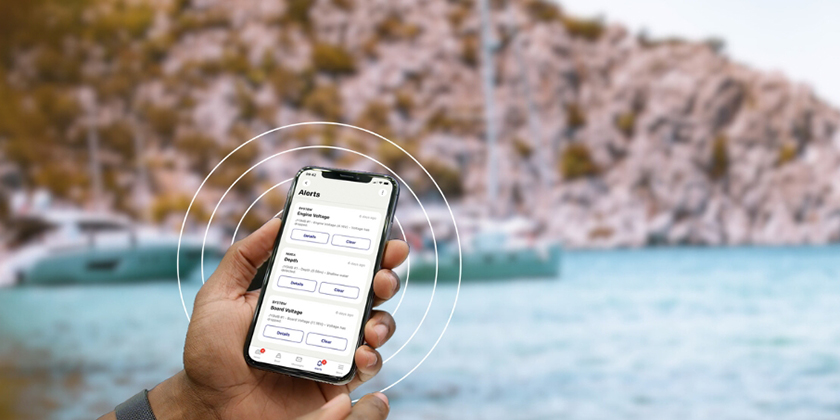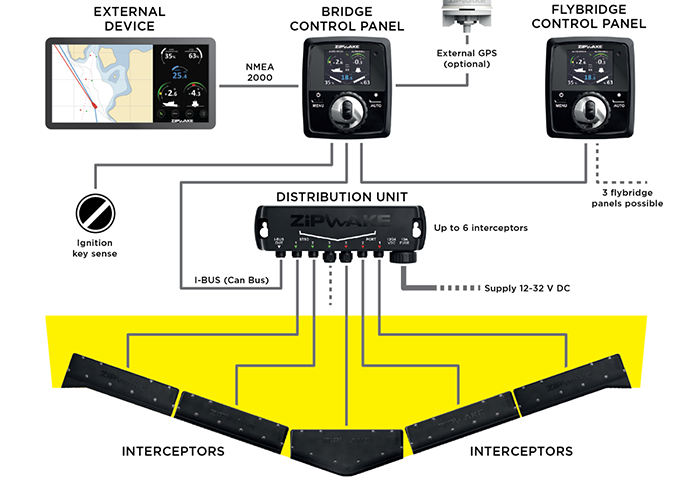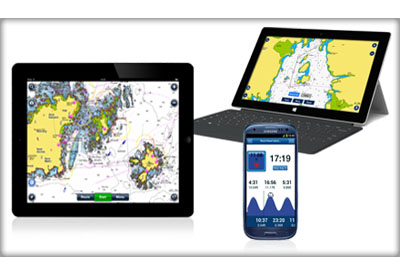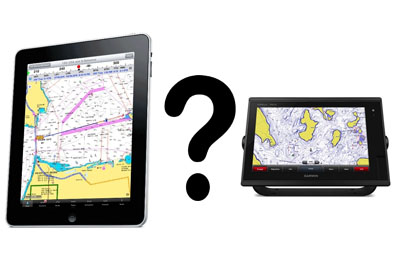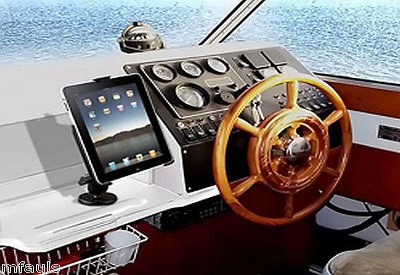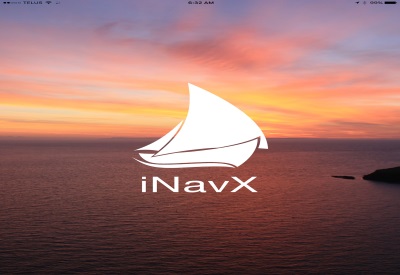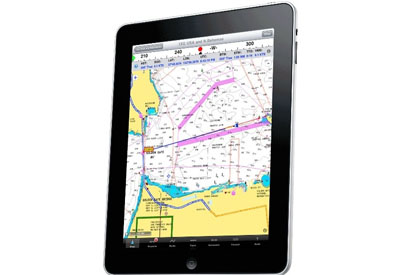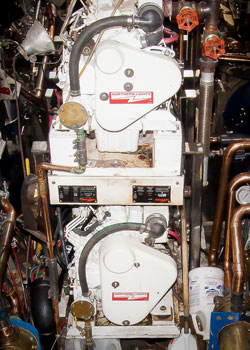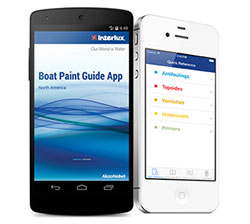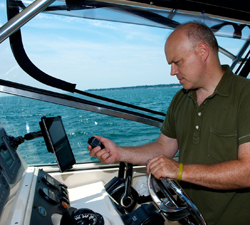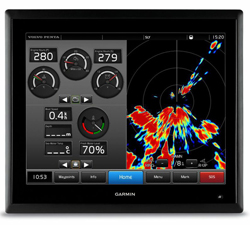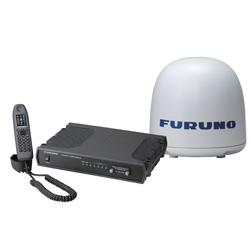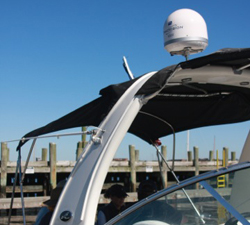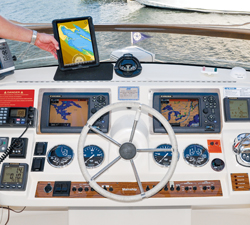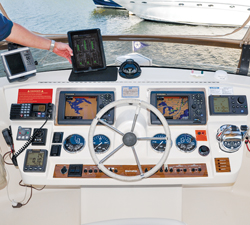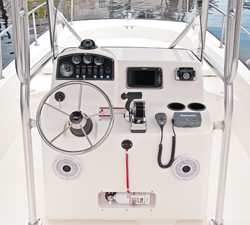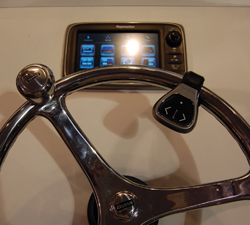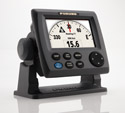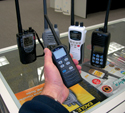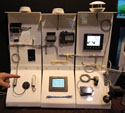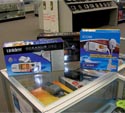August 6, 2024
Faster Speed from Superior Data
Aug 8, 2024 AIRMAR’s DST810 Smart™ Multisensor (depth/s…
April 23, 2024
Technology: Remote Boat Monitoring
Apr 25, 2024 By Corbo Corbishley Just over two years ag…
April 11, 2023
Zipwake Dynamic Trim Control System: FAQs
While interceptor technology for the marine industry has been around for decades, it’s still a relatively new concept to recreational boats and their owners. Imtra has been offering Zipwake interceptors since 2017, and while more and more people are familiar with the product, there are still a lot of questions.
September 27, 2017
Going iPad for Racing: Exploring iRegatta
Since the initial article of this column we have identified a wide range of apps and accessories for your iPad, including numerous marine navigation apps like iNavX and Navionics as well as a number of other marine related apps and accessories. One feature we have not yet considered is the use of apps for racing. Whether you race professionally or for fun there are apps that help take your racing to the next level.
August 22, 2017
Going iPad or Android for Marine Navigation
Since the initial article of this series we have looked at the iPad and its use as a marine navigation instrument. We have discussed its functionality, available apps, relevant hardware and compared it to traditional charplotters. This focus on iPad led one of our readers to an interesting question that we have yet to address. Question: Why has the focus been solely on the use of iPads for marine navigation rather than Android devices?
July 25, 2017
Going iPad or Chartplotter, Which is Right for You?
In Going iPad with Marine Navigation we concluded that iPads provide a modern platform for marine navigation. No we shall explore how functional an iPad is in comparison to standard chartplotters.
June 21, 2017
Going iPad for Marine Navigation: Mounting, Protecting and Charging
Question: Is it possible to mount, protect and charge your iPad during marine navigation. Answer: Yes, but it often requires some creative thinking and typically purchasing separate accessories for each duty.
June 15, 2017
Staying Connected
Not many of us need to stay connected to our global business empire while cruising (the 0.01 %?), but a pretty sizeable percentage of boat owners do need to keep in contact whether for business or family reasons.
April 25, 2017
Going iPad With Electronic Marine Navigation With Owen Hurst
There is a good deal of hesitancy and lack of understanding as to whether an iPad can fully replace existing navigation equipment. Quite simply put the answer is yes!
November 19, 2015
Pinging the Unknown
Sunshine flooded the waters separating California’s Catalina Island from Channel Islands Harbor, and Capt. Tom Petersen, skipper of the well-equipped Sea Ray 55 Sundancer Valkyrie, was leading a small flotilla when an unexpected fog bank quashed visibility. While Valkyrie carries the latest Raymarine kit (Petersen is a Raymarine Pro Ambassador), including a 12 kW, six-foot, open-array high-definition radar, Petersen’s companions weren’t electronically fortified. “I sat behind the other boats, watching them on my radar and maintaining radio contact,” said Petersen.
July 11, 2014
Power On The Hook
Boaters who prefer to be on the hook, such as ourselves in our Islander 36 sailboat Holole’a, greatly extend their cruising experience. There are many more bays and nooks and crannies available when using the anchor. And it is free! However, the one big issue is electrical power. The boat has to be self-contained for storing electrical power (batteries), recharging the batteries, and providing 120 Volt electrical power (main engine with alternator or dedicated genset). Solar panels can help recharge batteries also.Most boats use deep-cycle batteries for the house battery system. These are batteries that can tolerate hundreds of cycles of a 50% discharge. Without getting too technical, they are generally robust batteries of lead-acid, gel-cell, or AGM (absorbed glass matt) construction. The common physical sizes for 12 volt systems can vary from Group 24 (common car size), to golf-cart 6 volt batteries (connect 2 in series for 12 volts) up to massive and very heavy 4D and 8D. Battery banks can be added in parallel for more capacity.
March 25, 2014
How To Clean Onboard Electronics
With built in functions for radar, weather, chart plotters, engine data, and radio controls, boat owners are constantly touching their on-board electronics. Also, many boats with a more open design get a lot of salt spray on their dash as well. Shurhold Industries offers tips on how to properly clean a boat’s electronics.
March 19, 2014
Need To Find The Right Paint For Your Boat? Now There is an App for That.
The Interlux® Boat Paint Guide has gone digital with the launch of a free app for Apple® IOS and Android smartphones and tablets, designed to make it easy to access Interlux product information and select the correct Interlux paint system.
February 24, 2014
Marine Mobile and Apps
Convenient, Cool and Low-cost!From simple organizational Apps for your smart phone to complete wireless devices and systems, there are a rapidly growing number of products available to the average boater today. As more boaters integrate their personal wireless devices with their cruising life, the market for marine mobile devices and applications increases. The plus to this trend is that there are so many new and powerful options available to all level of boaters. The minus to this trend is that there are so many options!
October 10, 2013
Volvo Penta and Garmin Work Together to Make Boating Easier
I was delighted to be invited to Gothenberg, Sweden at the end of June where Volvo Penta hosted an exclusive new product media introduction with a careful selection of approximately 50 marine journalists from 14 different countries including Argentina and Brazil from South America. There were just three journalists from North America, and I was the only one from Canada – very flattering!
August 2, 2013
The Comforts of Home with Internet Onboard
It used to be that “all the comforts of home” meant an easychair, a pipe and the newspaper. Today, the easy chair is an office chair and the pipe is gone, no matter what we could have put in it. The poor old ‘paper’ newspaper has been replaced with an electronic version that carries pretty much all the same stories, plus streaming video, the ability to search, cut ‘n’ paste things you want to keep and stories that you can forward to friends and colleagues.
May 30, 2013
Going online – Onboard
Last year in Canada nearly 28 ½ million of us were online at least once a month, almost 83% of the population. Canada has just over 18 million people who are subscribed to Facebook. With stats like these, it’s no wonder that boaters have started to ask themselves: How is it possible to take the online experience onboard their boats? Traditionally boats have been a safe haven from the hustle and bustle of life. It’s a chance to unplug and unwind, to break the connection with the office and with the electronic world.
May 14, 2013
VHF, DSC, AIS and EPIRB
Why these acronyms should ring a bell. Communication is of the utmost importance when spending time on water; if anything goes wrong you want to make sure that you can alert someone close to your vessel to say that you are in need of assistance or that you are in danger. Using your cell phone on the water simply doesn't cut it. Cell phones do not provide the reliability that is needed on the water; coverage areas are different for each provider, signal strength is limited (or non-existent) when you are not close to shore.
April 4, 2013
Chasing Software – Stay Up to Date with Software Updates
There has been a real change in the focus and direction we’ve seen in marine electronics in recent years. Gone are the standalone equipment pieces, replaced by multifunction devices capable of “talking” to the other electronic devices on board your boat. To get first-hand information on what is really happening in the field, we traveled to CMC Electronics Esterline and spent the morning with Lead Technical Service Representative, Lorne Spence.
March 8, 2013
On Board Entertainment
We all know how nice it is to have a great home entertainment system. Watching live sports on TV, surfing the Internet and listening to music are everyday activities that we take for granted. Because of the advances in technology, we can transfer this land-based enjoyment over to our boats. Wouldn't it be great if you could watch the latest golf tournament at your favourite anchorage, or listen to your favourite playlist from your iPod? All this is possible, and with the latest and greatest in marine technology, things like controlling your music through your MFD (Multi Function Display) and watching TV while underway, make it that much more appealing.
March 8, 2013
The iPad Onboard
Overnight, the iPad is revolutionizing the field of marine electronics. It offers versatility for charting, navigation and cruise planning, and there’s a fast-growing world of choice in practical helmside apps. Nautical software apps on the iPad are the big news in marine electronics this year. A full range of apps for use onboard is available, covering navigation, tide and current data, AIS reporting, cruising guides, reference books and more. Capabilities once costing hundreds of dollars for navigation software on the PC are now about $50 on the Apple App Store.
November 22, 2012
User Benefits Of Navigation Electronics At The Helm On A 40’ Power Cruiser
What The Latest Electronics Can Do For You! Nicely laid out and easily learned, the flying bridge on this Mainship 40 has it all! BENEFIT: NMEA 2000 Helps All The Components Work Together. Networking: In today’s installations, all systems and instruments can be connected by “backbones” of cables that carry data using protocols such as NMEA 2000 or Raymarine’s proprietary SeaTalk NG. These interfaces greatly simplify installation while improving system reliability.
November 22, 2012
User Benefits Of Navigation Electronics At The Helm On A 43’ Cruising Sailboat
What The Latest Electronics Can Do For You! While sailboats are usually steered from the cockpit alone and core instruments and displays are needed there, often a lower navigation station has the primary equipment. Today’s mid-sized sailing cruiser requires much the same in electronics as a powerboat of similar size and range, with the exception of sailing-specific instruments. One key difference is that while most powerboats duplicate their electronics array at two steering stations, sailboats are usually steered from the cockpit alone and core instruments and displays are located there.
November 22, 2012
User Benefits Of A Thoughtfully Equipped Helm On A 22’ Power Boat
What The Latest Electronics Can Do For You! Despite the simple appearance, this Boston-Whaler Montauk 220 has a surprisingly complete electronics suite and a host of user benefits. In marine electronics there have been incredible advances in performance, simplicity and convenience combined with gradually dropping prices over the past few years. However, industry insiders tell us the prices have probably bottomed out; we’re not going lower. So, if you have an older boat, now is the time to re-think the benefits you can gain by upgrading your helm electronics equipment.
October 15, 2012
Tips on Cleaning Electronics
Our friends at GPS Store sent us this reminder about the cleaning of electronics, tips that are more important now that boats are being put away for the season. From my own experience I can confidently remind readers not to try to clean modern touchscreen electronics with a damp cloth while the unit is turned on! The GPS Store’s suggestions:
February 16, 2012
Big Navigation Features Migrating to Smaller Systems
In the past three months, the marine electronics industry has announced several new products that clearly show how big-boat navigation features are migrating down to smaller systems. While these new systems are physically smaller and come with smaller price tags too, they still deliver big performance. You can benefit in several ways. First, the overall prices are down given the performance levels, so you can afford more capabilities for your boat, large or small.
January 12, 2011
The Glass Helm: AIS for Every Boat
Although the Automatic Identification System (AIS) isn’t new, the importance and functionality of AIS for pleasure craft may well drive dramatic growth in the coming years, so we have chosen AIS as Part 4 in our Glass Helm series. There are many reasons why. First, there are two versions of AIS1: 1) a receive only system; and 2) a Class B transponder which both sends and receives.
December 16, 2010
The Glass Helm Display
In the April 2010 issue of Canadian Yachting, we were starting to “frame up” the glass helm from the perspective of an older boat that deserves better navigation and ancillary equipment. Of course, the “glass helm” refers to the single screen onto which all the information can be displayed. Several companies now offer NMEA 2000-certified multifunction display systems and once the NMEA 2000 trunk line (or backbone) is installed in your boat, the next logical step is to buy your multifunction display screen.
October 28, 2010
Social Calls or a Lifeline – Why You Need a VHF Radio
Even if you never venture away from your favourite sheltered lake or river, a VHF radio is well worth the $200 investment for a basic radio and the ROC (M) Course and License to operate it. Here’s why.
June 25, 2010
Framing up the Glass Helm
With this issue of Canadian Yachting, we are starting to “frame up” the glass helm from the perspective of an older boat that deserves better navigation and ancillary equipment. A prime example would have been the older classic, twin-engine cruiser that our group restored recently. Well over 100 lbs. of fatigued old wire with corroded connections and chaffed insulation was carefully disconnected, removed and replaced.
November 14, 2009
The VHF (Very High Frequency) Marine Radio
I often get asked how to best call for help if I have a problem when out on the water. Do I use my cell phone or should I have a VHF Marine Radio? The simple answer is that both may do the job depending on the circumstances but there are limitations. The cell phone has to be in range of a tower to forward the signal. A cell phone will contact only one person at a time and how often do you make a call only to get an answering machine or voice mail at the other end?

